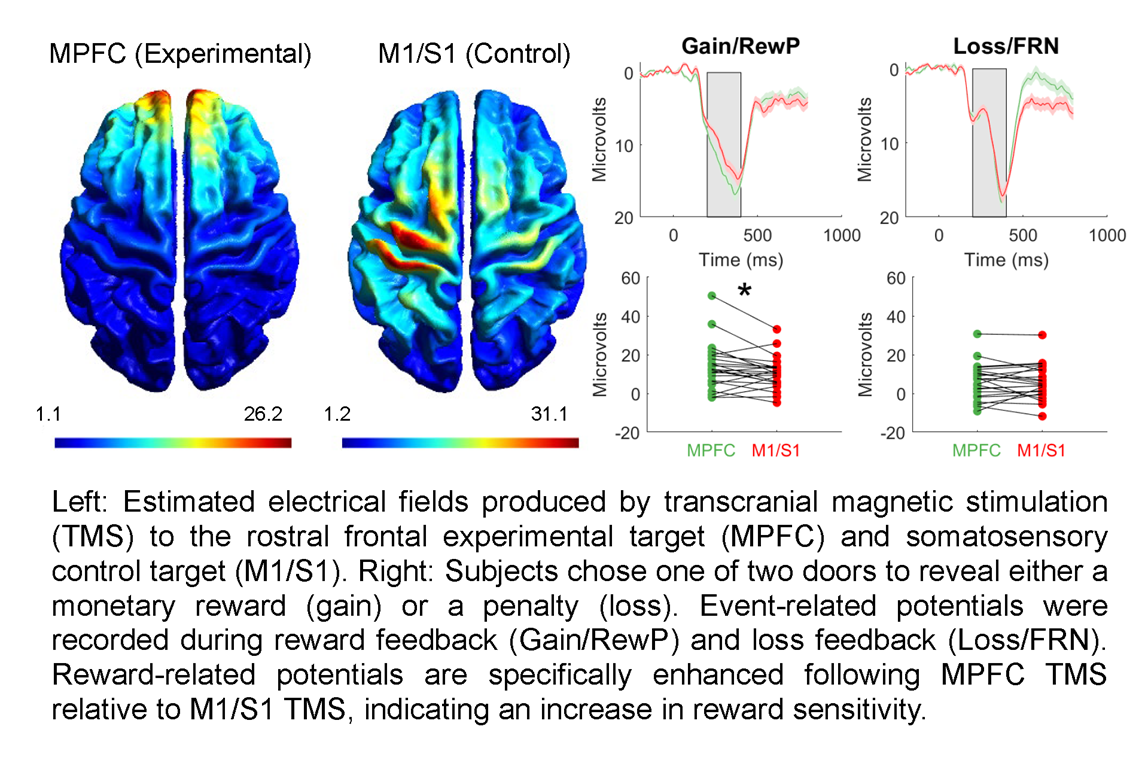Using Reward-network Guided Transcranial Magnetic Stimulation to Increase Reward-Sensitivity - Update
Derek Nee, PhD (PI, Psychology) and Greg Hajcak, PhD (Co-PI, Psychology)
Abnormalities of the reward circuit have been identified in numerous psychiatric disorders including major depressive disorder, substance abuse, obsessive-compulsive disorder, and schizophrenia. Reward circuit dysfunction is associated with anhedonia, a subjective loss in reactivity to pleasurable stimuli. Normalization of the reward circuit thus holds promise in the treatment of anhedonia and associated disorders. Such normalization requires measures that reliably track anhedonia, and interventions that modulate anhedonia. We have done extensive work identifying a reliable event-related potential (ERP) marker of reward sensitivity, referred to as the reward positivity (RewP). The RewP relates to behavioral and self-report measures of reward sensitivity, structural and functional MRI measures of the reward circuit, risk for depression, and recovery from depression. The goal of the project was to use transcranial magnetic stimulation (TMS) – a safe, noninvasive technique that stimulates neuronal activity – to target the reward circuit and modulate reward sensitivity as indexed by the RewP. Successful achievement of this goal is the first step toward a new treatment for anhedonia.
A marked challenge in targeting the reward circuit is that many of the brain structures that are directly tied to reward processing lie deep in the brain. Dr. Nee and his team used a combination of individually-tailored structural and functional MRI to identify a TMS target within the reward circuit. Building on their prior experience in modulating deep brain structures through cortical projections, the team identified in each individual a site in the rostral frontal cortex with strong connectivity to the ventral striatum, a major node in the reward circuit. TMS was delivered in a patterned fashion to mimic long-term potentiation. Rostral frontal TMS (experimental TMS) was compared to somatosensory TMS (control TMS) in a counterbalanced cross-over design. Relative to control TMS, experimental TMS directed at the reward circuit significantly increased the RewP in a sample of 23 healthy, young adults. These data suggest that TMS can improve reward sensitivity as hypothesized. Hence, this is a promising first step toward a novel intervention to modulate the reward circuit and dysfunctions thereof.

